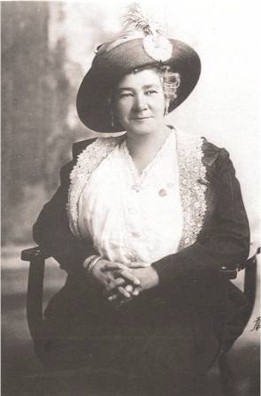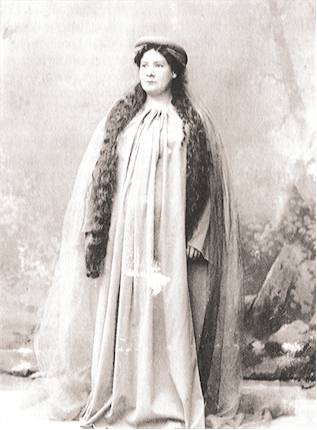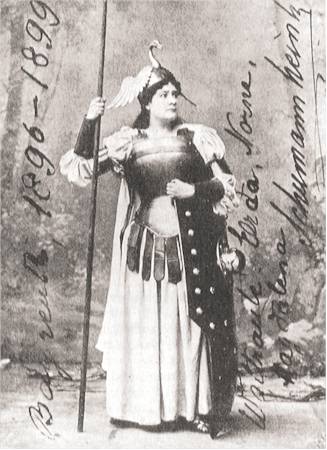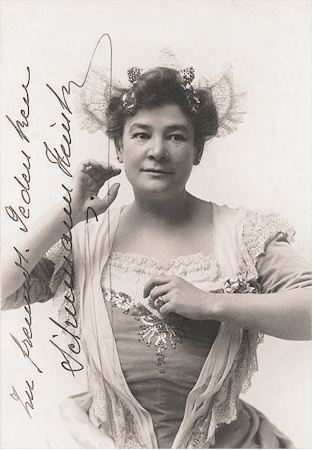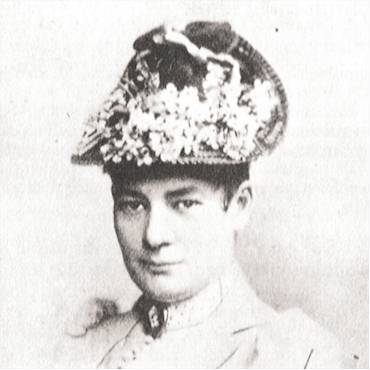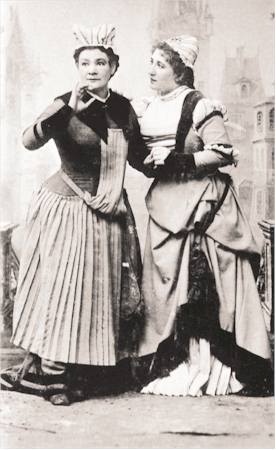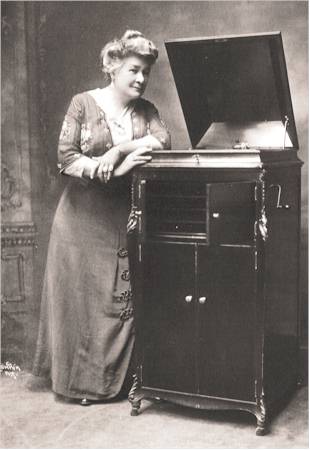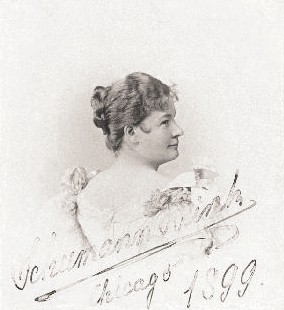Austrian contralto, 1861 - 1936
Biographical notes: She was born as Tini Rössler in Prague. Among her teachers was Giovanni Battista Lamperti. She
made her début at the Dresden opera as Azucena in 1878 which was not very successful because of her lacking stage experience. But there were hopeful signs in her singing. In the next season
she made consistent progress in vocal technique and soon she began to reveal a unique individuality in her vocal category. After marriage to Ernst Heink, the impresario Pollini engaged
her to Hamburg where she stayed until 1897. She was a much acclaimed Erda, Fricka, Waltraute and Brangäne and performed the roles with Gustav Mahler at Covent Garden. In 1893, after
divorce from first husband, she married the actor Paul Schumann. A very close relationship to Bayreuth’s Festival lasted from 1896 to 1914. Cosima Wagner was very fond of the artist and
admired her greatly. She became a regular member of the Metropolitan from 1898 to 1903. Ernestine Schumann-Heink gave birth to seven children! By then she had begun series of popular
cross-country American concert tours that made her into a national legend. Her huge repertory included about 150 roles! Her English and American stage career was mainly centered on
Wagner. Her farewell performance was at the Met in 1932 as Erda, one of her greatest achievements on stage.
As Erda
As Waltraute at the Bayreuth Festival
Ernestine Schumann-Heink in “Love’s Lottery” by Julian Edwards, 1904
Comment: Ernestine Schumann-Heink was unquestionably the most famous contralto of her time.
Her virtuosity in florid work is remarkable. Coloraturas and trills are of great brilliance. Her interpretation of Il segreto per essere felice from Donizetti’s Lucrezia Borgia is a splendid
demonstration of her technique. This aria belonged to the repertory of every contralto at her time. It needs not only technique and virtuosity but also charme, temperament and personality!
And her singing was so charming! One of the most thrilling interpretations is her version of Erda’s Weiche, Wotan, weiche.The arias by Meyerbeer and Verdi (Acuzena) are further examples of her great art.
She was also a fine Lieder singer. Listen to her dramatic interpretation of Schubert’s Erlkönig. How charming she sings in operettas and - what a firework in Arditi’s bravour aria! She is truly a
singer’s singer and should be studied by all contralto and mezzo-soprano aspirants.
An early portrait (by courtesy of Ed Norton)
Johanna Gadski and Ernestine Schumann-Heink in “Die Meistersinger von Nürnberg”
Listening to her recordings...
(by courtesy of Ed Norton)
Many thanks to Ed Norton
|
|||||||||||||||||||||||||
